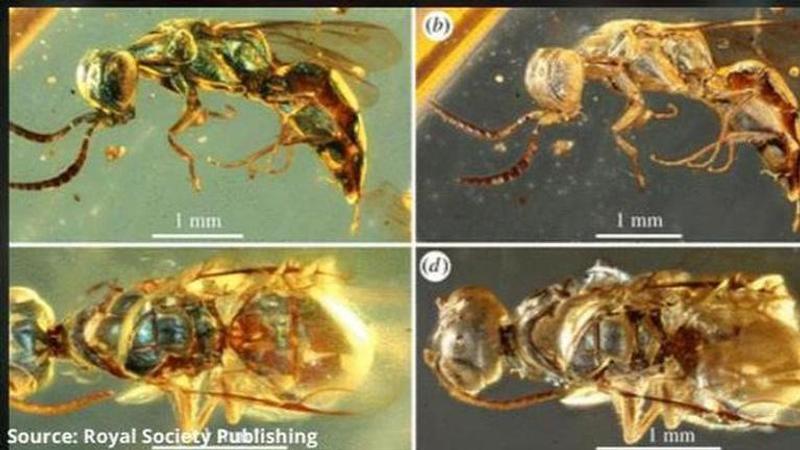Published 14:03 IST, August 20th 2020
Insects preserved in amber still glowing 99 million years later in Myanmar
Researchers in China found fossils of insects that have been preserved in amber and are still 99 million years later. Read on to know more.

Scientists have discovered a lot about prehistoric life through fossils. Although fossils help in discovering many unknown facts, they still can’t reveal everything. For instance, fossils don’t tell us what colours were ancient animals and plants. However, in an extremely rare case researchers got lucky. According to a study published in the journal Proceedings of the Royal Society B, researchers have been able to identify colours of three ancient insects which were preserved in amber. Read on to know more.
Source: Royal Society Publishing Official Website
Where was the study conducted?
This groundbreaking study was conducted by researchers at the Nanjing Institute of Geology and Paleontology, in China. The insects can be dated back to the Cretaceous period, which occurred 99 million years ago. The study revealed that these insects were all preserved in pieces of amber found in a mine in northern Myanmar.
Which insects were found?
The insects appear to be glowing inside the amber. There is a beetle, a fly, and a wasp inside the amber. Researchers have claimed that they are so well-preserved that their true colours have been easily identified.
Which colours were seen on the insects?
In the past, there have been reports about identifying colour in the fossils. But, times researchers realised that what they were looking at were not the true colours of the animal or plant. This happens because the colours of fossils undergo changes over thousands of years due to the fossilisation process. The study revealed that in the case of these insects, their “structural colours” have remained visible even after the researchers carefully polished the amber until and exposed the insect’s bodies’. The insects have blue, green, and purple colours on their bodies.
The researchers said that these images were edited in Photoshop to adjust brightness and contrast. But, they also mention that the colours were not changed or tampered with. The luminous structural hues present on these insects indicate that they have evolved these iridescent traits independently from their genealogy. Sadly, this is where the story of these glowing insects ends. The oldest amber in the fossil record appears to be about 320 million years old, which is not too long ago on the geologic timescale. The amber in Myanmar is from the Cretaceous period.
According to another report in Popular Science, mining amber is a big but, ethically questionable business in Myanmar. The awareness around this ethical issue has grown in recent years. This April 2020, representatives of the Society of Vertebrate Paleontology had signed their names to a letter requesting the editors of scientific journals to stop accepting papers whose findings were based on the Burmese amber.
Updated 14:03 IST, August 20th 2020




